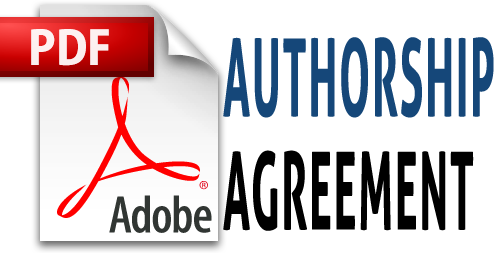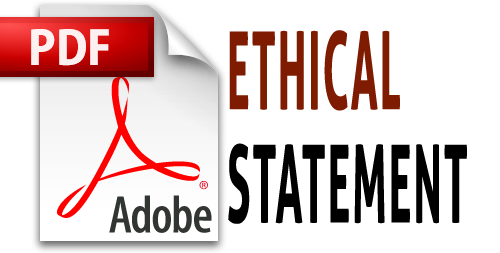ETNO-STEM DALAM PEMBELAJARAN IPA : A SYSTEMATIC LITERATURE REVIEW
 Nurhasnah Nurhasnah(1*),
Minda Azhar(2),
Yohandri Yohandri(3),
Fitri Arsih(4)
Nurhasnah Nurhasnah(1*),
Minda Azhar(2),
Yohandri Yohandri(3),
Fitri Arsih(4)
(1) Universitas Islam Negeri Imam Bonjol Padang
(2) Universitas Negeri Padang
(3) Universitas Negeri Padang
(4) Universitas Negeri Padang
(*) Corresponding Author
 Abstract viewed : 7166
|
Abstract viewed : 7166
|  PDF downloaded : 1929
PDF downloaded : 1929
Abstract
Ethno-STEM research is the latest research in Indonesia. This is motivated by the socio-cultural diversity that is owned by Indonesia. This research is a systematic literature study that identifies ethno-STEM research trends in science learning (science, physics, chemistry, and biology) at each level of education. Based on the data obtained, the trend of Ethno-STEM research is dominated by development research (4D, ADDIE, Bolg and Gall, and R&D). the trend of research topics is more related to the development of Ethno-STEM-based teaching materials in science learning. The variables that are widely measured are the increase in creative thinking skills, learning outcomes, and scientific knowledge
Abstrak
Penelitian etno-STEM merupakan penelitian terbaru di Indonesia. Hal ini dilatarbelakangi oleh keragamaan sosial budaya yang dimiliki oleh Indonesia. Penelitian ini merupakan penelitian studi literatur sistematis yang mengidentifikasi tren penelitian etno-STEM dalam pembelajaran IPA (sains, fisika, kimia dan biologi) pada setiap tingkat pendidikan. Berdasarkan data yang diperoleh, trend penelitian Etno-STEM didominasi oleh penelitian pengembangan (4D, ADDIE, Bolg and Gall dan R&D). trend topik penelitian lebih banyak terkait dengan pengembangan bahan ajar berbasis Etno-STEM dalam pembeljaran IPA. Variabel yang banyak diukur adalah peningkatan kemampuan berfikir kreatif, hasil belajar dan pengetahuan sains.
Keywords
References
Anugrah, I.R. 2021. Students’ perspectives on Batik Cirebon for high school chemistry embedded STEM learning. Journal of Physics: Conference Series. 1957(1). doi:10.1088/1742-6596/1957/1/012030.
Azalia, I., Sudarmin, S. and Wisnuadi, A. 2020. The effects of ethnoscience integrated STEM e-book application on student’s science generic skills in chemical equilibrium topic. International Journal of Active Learning. 5(1),pp. 19–25.
Daryanto, K. and Karim, S. 2017. Pembelajaran abad 21. Yogyakarta: Gava Media. [Preprint].
Gonzalez, H.B. and Kuenzi, J.J. 2012. Science, technology, engineering, and mathematics (STEM) education: A primerin. Congressional Research Service, Library of Congress Washington, DC.
Harto, N. et al. 2019. Effectiveness of the Project Based Learning Model Integrated Ethno Technology to Actualize Superior Teacher Candidates. 287(Icesre 2018),pp. 58–62. doi:10.2991/icesre-18.2019.12.
Izzah, S.N. et al. 2020. The Development of Science Learning Document Grounded on STEM-Approach Integrated Ethnoscience. 443(Iset 2019),pp. 554–558. doi:10.2991/assehr.k.200620.111.
Izzah, S.N., Sudarmin, S. and Prasetyo, A.P.B. 2020. Identification of the indigenous science concepts in the batik-manufacturing process to develop STEM integrated ethnoscience learningin . Journal of Physics: Conference Series. IOP Publishing. p. 42032.
KEMENDIKBUD, R. and Kemendikbud, K.B.S.D.M. 2018. Kementerian Pendidikan Dan Kebudayaan Republik Indonesia. Infograpis.
Kizilaslan, A., Sozbilir, M. and Yasar, M.D. 2012. Inquiry Based Teaching in Turkey: A Content Analysis of Research Reports. International Journal of Environmental and Science Education. 7(4),pp. 599–617.
Van Laar, E. et al. 2017. The relation between 21st-century skills and digital skills: A systematic literature review. Computers in human behavior. 72,pp. 577–588.
Lestari, G. 2016. Bhinnekha Tunggal Ika: Khasanah Multikultural Indonesia Di Tengah Kehidupan SARA. Jurnal Ilmiah Pendidikan Pancasila Dan Kewarganegaraan. 28(1).
Li, Y. et al. 2020. Research and trends in STEM education: a systematic review of journal publications. International Journal of STEM Education. 7(1),pp. 1–16.
Lin, T.-J. et al. 2019. Research trends in science education from 2013 to 2017: A systematic content analysis of publications in selected journals. International Journal of Science Education. 41(3),pp. 367–387.
Mulbar, U. and Bahri, A. 2021. Biology Science Literacy of Junior High School Students in South Sulawesi, Indonesiain . Journal of Physics: Conference Series. IOP Publishing. p. 12084.
Nadhifah, N. and Muslih, I. 2017. Peningkatan Kapasitas Guru dalam Mengembangkan Media Pembelajaran Information and Communication Technology (ICT) di Madrasah Ibtidaiyah Thoriqul Huda Randuharjo Pungging Mojokerto. Modeling: Jurnal Program Studi PGMI. 4(2),pp. 172–191.
Newman, M. and Gough, D. 2020. Systematic reviews in educational research: Methodology, perspectives and application. Systematic reviews in educational research. pp. 3–22.
Ni’mah, F. 2019. Research trends of scientific literacy in Indonesia: Where are we? Jurnal Inovasi Pendidikan IPA. 5(1),pp. 23–30.
Nisaâ, A., Sudarmin, S., & Samini, S. 2015. Efektivitas penggunaan modul terintegrasi etnosains dalam pembelajaran berbasis masalah untuk meningkatkan literasi sains siswa. Unnes Science Education Journal. 4(3).
Perinpasingam, P.T.S. et al. 2014. Development of a Science module through Interactive Whiteboard. Rev. Eur. Stud. 6,p. 31.
PISA 2015. PISA 2015. OECD Programme for International Student Assessment 2015. p. 89.
Pitoyo, A.J. and Triwahyudi, H. 2017. Dinamika perkembangan etnis di Indonesia dalam konteks persatuan negara. Populasi. 25(1),pp. 64–81.
Qori, P.H. et al. 2020. Implementation of STEM Integrated Ethnoscience-based Vocational Science Learning in Fostering Students’ Higher Order Thinking Skills (HOTs). International Journal of Active Learning. 5(2),pp. 53–61.
Ramdani, A. et al. 2019. Pengembangan alat evaluasi pembelajaran IPA yang mendukung keterampilan Abad 21. Jurnal Penelitian Pendidikan IPA. 5(1).
Reffiane, F. et al. 2021. Developing an Instrument to Assess Students’ Problem-Solving Ability on Hybrid Learning Model Using Ethno-STEM Approach through Quest Program. Pegem Egitim ve Ogretim Dergisi. 11(4),pp. 1–8. doi:10.47750/pegegog.11.04.01.
Semarang, U.N., Diliarosta, S. and Padang, U.N. 2021. The Using of Google Form Application for Assessment of Metabolite Secondary Learning w ith ‘ Sudarmin Inquiry Model ’ Integrated Ethnoscience and Stem. 574(Iset 2020),pp. 642–647.
Setiawan, B. et al. 2017. The development of local wisdom-based natural science module to improve science literation of students. Jurnal Pendidikan IPA Indonesia. 6(1).
Sharif, R. 2019. The relations between acculturation and creativity and innovation in higher education: A systematic literature review. Educational Research Review. 28,p. 100287.
Sudarmin et al. 2019. Developing Students’ Entrepreneurial Characters through Downstreaming Research on Natural Product Learning with Ethnoscience Integrated Stem. Journal of Physics: Conference Series. 1387(1). doi:10.1088/1742-6596/1387/1/012085.
Sudarmin et al. 2020. Students’ innovative and creative thinking skill profile in designing chemical batik after experiencing ethnoscience integrated science technology engineering mathematic integrated ethnoscience (ethno-stem) learnings. Journal of Physics: Conference Series. 1567(2). doi:10.1088/1742-6596/1567/2/022037.
Sudarmin, S. et al. 2018. Science Analysis of “Nginang “ Culture In Context of Science Technology Engineering And Mathematics (Stem) Integration of Ethnoscience. 247(Iset),pp. 413–418. doi:10.2991/iset-18.2018.84.
Sudarmin, S., Sumarni, W., et al. 2019. Implementing the model of project-based learning : integrated with ETHNO-STEM to develop students’ entrepreneurial characters. Journal of Physics: Conference Series. 1317(1). doi:10.1088/1742-6596/1317/1/012145.
Sudarmin, S., Kurniawan, C., et al. 2019. The Implementation of Chemical Project Learning Model Integrated with Ethno-Stem Approach on Water Treatment Topic Using Kelor (Moringa oleifera) Seed Extract As Bio-Coagulant. KnE Social Sciences. 2019,pp. 492–501. doi:10.18502/kss.v3i18.4740.
Sudarmin, S. et al. 2020. Scientific reconstruction of indigenous knowledge of batik natural dyes using ethno-STEM approach. Journal of Physics: Conference Series. 1567(4). doi:10.1088/1742-6596/1567/4/042046.
Sudarmin, Sumarni, W. and Mursiti, S. 2019. The learning models of essential oil with science technology engineering mathematic (STEM) approach integrated ethnoscience. Journal of Physics: Conference Series. 1321(3). doi:10.1088/1742-6596/1321/3/032058.
Sumarni, W. and Kadarwati, S. 2020. Ethno-stem project-based learning: Its impact to critical and creative thinking skills. Jurnal Pendidikan IPA Indonesia. 9(1),pp. 11–21. doi:10.15294/jpii.v9i1.21754.
Syazali, M. and Umar, U. 2022. Peran Kebudayaan Dalam Pembelajaran IPA Di Indonesia: Studi Literatur Etnosains. Jurnal Educatio FKIP UNMA. 8(1),pp. 344–354.
Tresnawati, N. et al. 2020. Learning Science Through STEAM Approach (Science Technology, Engineering, Arts, and Mathematics) Integrated Ethnoscience in the Context of Batik Culture for Pre Service Teachers of Primary Education. 429(Icasseth 2019),pp. 243–246. doi:10.2991/assehr.k.200402.056.
Tresnawati, N. et al. 2021. Science Batik Ciwaringin: The Implementation of Ethno-STEM PjBL Model in learning Biotechnology at PGSD Students. Journal of Physics: Conference Series. 1842(1). doi:10.1088/1742-6596/1842/1/012063.
Turiman, P. et al. 2012. Fostering the 21st century skills through scientific literacy and science process skills. Procedia-Social and Behavioral Sciences. 59,pp. 110–116.
Wijayanti, D.M., Ahmadi, F. and Sarwi, S. 2019. Keefektifan Mobile Learning Media Bermuatan Ethnoscience terhadap Hasil Belajar Siswa Sekolah Dasar. MODELING: Jurnal Program Studi PGMI. 6(2),pp. 129–136.
Yuliana, I. 2017. Pembelajaran berbasis etnosains dalam mewujudkan pendidikan karakter siswa sekolah dasar. Jurnal Pendidikan dan Pembelajaran Sekolah Dasar. 1(2),pp. 98–106.
Yuliana, I. et al. 2021. The Effect of Ethnoscience-Themed Picture Books Embedded Within Context-Based Learning on Students’ Scientific Literacy. Eurasian Journal of Educational Research. 92,pp. 317–334.
Refbacks
- There are currently no refbacks.
Copyright (c) 2022 Nurhasnah, Minda Azhar, nFn Yohandri, Fitri Arsih

This work is licensed under a Creative Commons Attribution-NonCommercial 4.0 International License.
Kwangsan Indexed By
Kwangsan: Jurnal Teknologi Pendidikan diterbitkan oleh Balai Besar Guru Penggerak (BBGP) Prov. Jawa Timur.
Kementerian Pendidikan dan Kebudayaan
Alamat Redaksi:
Jl. Mangkurejo, Ds. Kwangsan, Sedati - Sidoarjo.
Telp 0318911373 Fax. 0318911392
Email: jurnal.kwangsan@kemdikbud.go.id & jurnalkwangsan@dikbud.belajar.id






























